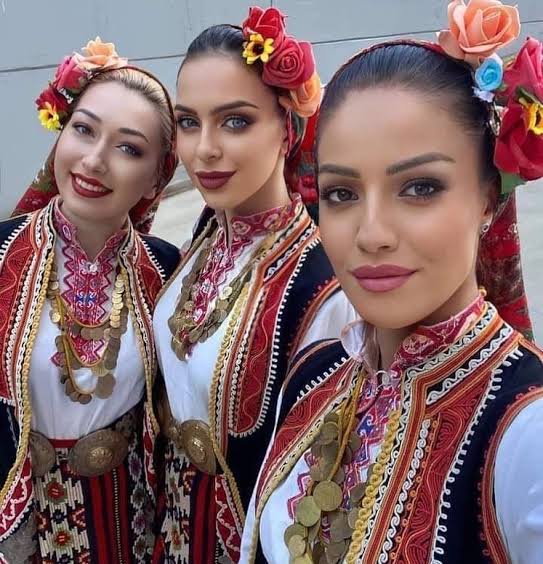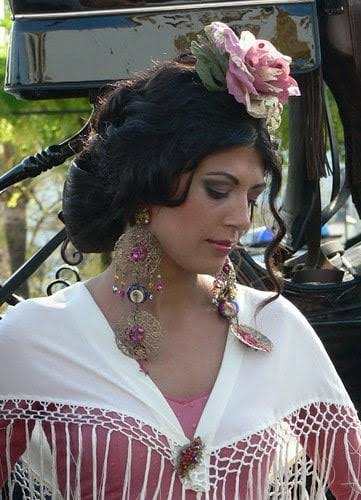D
Deleted member 196670
Silver
- Joined
- Aug 1, 2025
- Posts
- 733
- Reputation
- 843
I usually expose "inclusive" white supremacists but this one is for the Nordicists.
1. These guys think that Ancient Greeks and Ancient Romans were "white" but became darker due to later mixing. The reality is that intermediate skin has always been ubiquitous in Southern Europe and if ANYTHING there has been a LIGHTENING of skin over the millennia.
Phenotypes of the Southern Arc in their West Eurasian context (A genetic probe into the ancient and medieval history of Southern Europe and West Asia Lazaridis et al 2021):
"Our survey of populations of the Southern Arc focuses on ancestry, but it also illuminates other aspects of biology. Superficial phenotypes such as pigmentation were remarked upon by ancient
writers. We carried out a survey of predicted pigmentation and other phenotypes of West
Eurasian populations across time (Supplementary Text S3; Fig. 6) (18) to discover the extent to
which ancient authors’ perceptions (based on direct observation or through reports of faraway
peoples) might correspond to the genetic inference of their appearance . We find that the
modal phenotype of eye, skin, and hair pigmentation in ancient West Eurasians was brown-eyed, of intermediate complexion, and brown hair—even among Yamnaya steppe pastoralists—contradicting stereotypical characterizations of Steppe peoples as being blue-eyed, pale-skinned,
and light-haired (42, 43). Note that when we use categorizations—such as “intermediate”—of
the continuous skin tone phenotype, we use the scheme adopted by HIrisPlex-S (41); in that
20 scheme “intermediate” skin tones are commonly found in present-day Mediterranean populations and “pale” ones in present-day Northern European ones. A general depigmentation trend can be
seen across time (Fig. 6) with a reduction of black hair and darker skin tones accompanying the increase of brown hair and intermediate skin tones. However, inhabitants of the Southern Arc
had significantly darker pigmentation on average than those of the north (defined as Europe
outside the Southern Arc and the Eurasian steppe) over all periods (Fig. 6), providing support for the identification by ancient writers of light pigmentation phenotypes as being more common insome groups of the north such as Celts and Scythians. Another contrast made by ancient writers was with people of Africa, such as Egyptians and Ethiopians, who were said to be of darker pigmentation (e.g., Hdt. 2.104); a comparison of people of the Southern Arc with their southern neighbors will become possible when genomic data from people living south of the Mediterranean become available. When examining composite pigmentation phenotypes (Fig. 6D), we observe that while average pigmentation did indeed differentiate between populations of the Southern Arc and the north, light phenotypes were found in both areas at similar early dates, growing in parallel in the more recent millennia of history. Light pigmentation in West Eurasia
was the result of selection across time which continued into the Historical period, and not
the survival of supposed ancient Indo-Europeans phenotypes as some 19th /20th century writers
supposed or the product of the direct influence of climate that some Greco-Roman
writers hypothesized in order to explain patterns they observed during their own time. The
malleability of human phenotypes across time, and the presence of diverse ones—whether dark, light, or interemediate—across space undermine prejudiced views of history that overemphasize
superficial traits at the expense of the more meaningful aspects of human culture and biology."
2. "Southern Europeans are trash for excess Middle Eastern and North African ancestries!"
What civilisation was in Northern/Eastern/Central Europe during antiquity? None. The richest parts of the Roman/Selecuid Empires were along the Eastern Mediterranean and much of the Middle East. Not in London. Not in Germania.
3. Even people who mock "European" cuisine always mock NORTHERN cuisine. Nobody mocks Greek cuisine because it's VERY similar to Levantine cuisine (outside of a few religious distinctions, there's a lot of overlap). Everyone claims to love "Italian" food but most of what you love in SOUTHERN cuisine. The most "Northern" shifted parts of Italy has slop nobody cares for. Who cares for polenta?
4. "Southern Italians are just Catholic Jews!"
Exactly. That's why they're better.
Without the Middle Eastern component of Southern Europe, Europe as a whole would be nothing. I will post pictures of superior Southern European women.

Cretan

Sicilian

Albanian

Bulgarian

Andalusian
Fogs any Nordic.
1. These guys think that Ancient Greeks and Ancient Romans were "white" but became darker due to later mixing. The reality is that intermediate skin has always been ubiquitous in Southern Europe and if ANYTHING there has been a LIGHTENING of skin over the millennia.
Phenotypes of the Southern Arc in their West Eurasian context (A genetic probe into the ancient and medieval history of Southern Europe and West Asia Lazaridis et al 2021):
"Our survey of populations of the Southern Arc focuses on ancestry, but it also illuminates other aspects of biology. Superficial phenotypes such as pigmentation were remarked upon by ancient
writers. We carried out a survey of predicted pigmentation and other phenotypes of West
Eurasian populations across time (Supplementary Text S3; Fig. 6) (18) to discover the extent to
which ancient authors’ perceptions (based on direct observation or through reports of faraway
peoples) might correspond to the genetic inference of their appearance . We find that the
modal phenotype of eye, skin, and hair pigmentation in ancient West Eurasians was brown-eyed, of intermediate complexion, and brown hair—even among Yamnaya steppe pastoralists—contradicting stereotypical characterizations of Steppe peoples as being blue-eyed, pale-skinned,
and light-haired (42, 43). Note that when we use categorizations—such as “intermediate”—of
the continuous skin tone phenotype, we use the scheme adopted by HIrisPlex-S (41); in that
20 scheme “intermediate” skin tones are commonly found in present-day Mediterranean populations and “pale” ones in present-day Northern European ones. A general depigmentation trend can be
seen across time (Fig. 6) with a reduction of black hair and darker skin tones accompanying the increase of brown hair and intermediate skin tones. However, inhabitants of the Southern Arc
had significantly darker pigmentation on average than those of the north (defined as Europe
outside the Southern Arc and the Eurasian steppe) over all periods (Fig. 6), providing support for the identification by ancient writers of light pigmentation phenotypes as being more common insome groups of the north such as Celts and Scythians. Another contrast made by ancient writers was with people of Africa, such as Egyptians and Ethiopians, who were said to be of darker pigmentation (e.g., Hdt. 2.104); a comparison of people of the Southern Arc with their southern neighbors will become possible when genomic data from people living south of the Mediterranean become available. When examining composite pigmentation phenotypes (Fig. 6D), we observe that while average pigmentation did indeed differentiate between populations of the Southern Arc and the north, light phenotypes were found in both areas at similar early dates, growing in parallel in the more recent millennia of history. Light pigmentation in West Eurasia
was the result of selection across time which continued into the Historical period, and not
the survival of supposed ancient Indo-Europeans phenotypes as some 19th /20th century writers
supposed or the product of the direct influence of climate that some Greco-Roman
writers hypothesized in order to explain patterns they observed during their own time. The
malleability of human phenotypes across time, and the presence of diverse ones—whether dark, light, or interemediate—across space undermine prejudiced views of history that overemphasize
superficial traits at the expense of the more meaningful aspects of human culture and biology."
2. "Southern Europeans are trash for excess Middle Eastern and North African ancestries!"
What civilisation was in Northern/Eastern/Central Europe during antiquity? None. The richest parts of the Roman/Selecuid Empires were along the Eastern Mediterranean and much of the Middle East. Not in London. Not in Germania.
3. Even people who mock "European" cuisine always mock NORTHERN cuisine. Nobody mocks Greek cuisine because it's VERY similar to Levantine cuisine (outside of a few religious distinctions, there's a lot of overlap). Everyone claims to love "Italian" food but most of what you love in SOUTHERN cuisine. The most "Northern" shifted parts of Italy has slop nobody cares for. Who cares for polenta?
4. "Southern Italians are just Catholic Jews!"
Exactly. That's why they're better.
Without the Middle Eastern component of Southern Europe, Europe as a whole would be nothing. I will post pictures of superior Southern European women.

Cretan

Sicilian

Albanian

Bulgarian

Andalusian
Fogs any Nordic.


